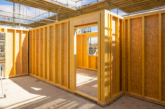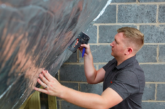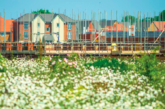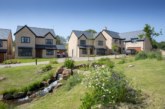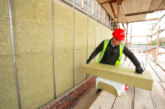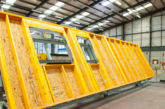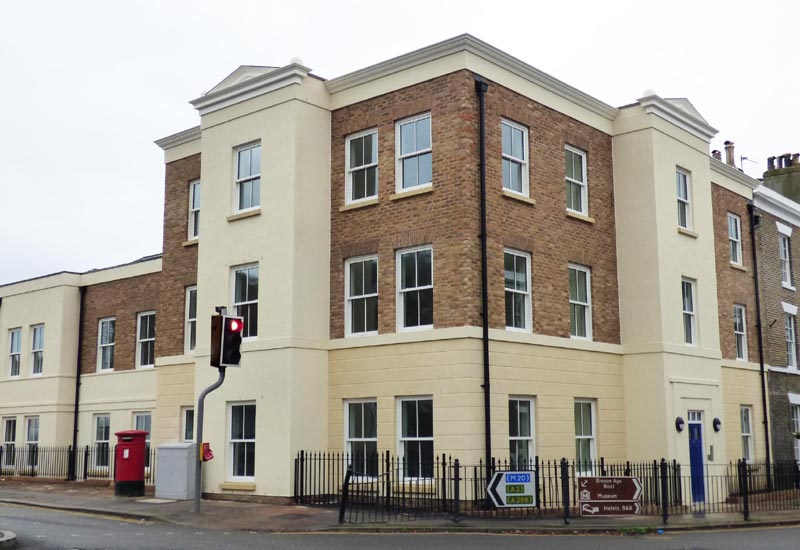
Andrew Carpenter, Chief Executive of the Structural Timber Association discusses the significance of the new RIBA Plan of Work and how structural timber frame suits pre-manufacture.
The launch of the RIBA Plan of Work 2013: Designing for Manufacture and Assembly signifies the beginning of the latest epoch in the construction timeline.
The history of the construction industry consists of vast periods where particular building materials were favoured over competing alternatives. For example, the extensive use of concrete has been in and out of style since the 1860s, with its most recent widespread use in the post World War Two period.
Most recently, on site construction build methods; such as brick and block have been the preferred construction process. In the current construction climate, however, brick and block is falling from favour.
As the on going skills shortage has stifled the potential to recruit both experienced, and new recruits, into the construction industry and the UK’s housing demand has dramatically increased, housebuilders and developers have identified the need for faster, less labour intensive build methods.
Rapidly taking the place of traditional onsite construction methods, the era of onsite assembly has begun, supported by a multitude of pre-manufacturing facilities and build methods.
A new era?
The updated RIBA Plan of Work 2013: Designing for Manufacture and Assembly recently highlighted the importance of this new period within the construction industry.
Harnessing digital processes, the report outlines how designing for manufacture and assembly (DfMA) allows for the mass-customisation of solutions, often used by other industries such as automotive, to become commonplace for the built environment. Creating new design processes, the RIBA Plan of Work puts forward that utilising pre-manufacture will enable the industry to meet the UK Government’s Construction 2025 strategy of 50% faster delivery, 50% lower greenhouse gas emissions, 50% improvements in exports and 33% lower costs.
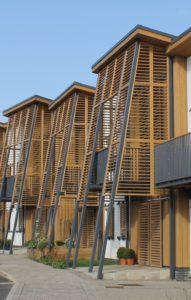
Providing counsel and advice for those approaching pre-manufacture the report outlines the benefits of prefabrication, such as 20-60% reduction build time, 20-40% reduction in construction costs along with more than a 70% reduction in onsite labour costs. These benefits enable the current challenges encountered by construction industry, such as the skills shortage and the immediate need for more housing, to be overcome
Construction quality
Furthermore, pre-manufacture also potentially offers a better construction quality controlled in factory environments, better environmental outcomes such as reduced waste along with more efficient and collaborative working throughout the supply chain.
In addition, the Farmer Review and its frank report into the major challenges of the construction industry has also identified that there should be a much greater focus on pre-manufacture. Using the latest technology and building methods, the report puts forward that the sector should revolutionise to allow it to meet modern demands.
Structural timber frame
Integral to this, along with achieving the Government’s wider housing and 2025 strategy aims, is the use of structural timber frame.
Poised for growth, the structural timber frame sector has the capacity to double its output if, and when, required. This is due to years of significant investment in automated, factory based manufacturing and encouraging best practice throughout the supply chain.
A readily available building material, structural timber frame is the only sustainable material that can easily meet industry demands where other materials can suffer supply shortages.
Dominating the pre-manufacture for many years, structural timber frame has experienced rapid growth over the last three years. Increasing its market share by 10% since 2004, the material is now used in more than 27% of new build homes throughout the UK, a clear demonstration of its inherent pre-manufacture capabilities.
Time frame
Furthermore, building with structural timber frame produces high quality properties in a shorter build period, as by utilising the benefits of pre- manufacture removes unpredictable variables, such as the weather, from the construction timeline.
Providing energy efficient, sustainable properties, structural timber frame households offer superior air tightness. Subsequently, this translates into lower energy use, increased thermal comfort, increased air quality as well as a lower risk of moisture damage for future residents.
Applying these superior performance qualities along with the reduced on site waste, responsible sourcing and environmental impact of materials, structural timber frame is suited for compliance with increasingly sustainable, low carbon legislation. Currently accounting for 85% of Passive Houses, structural timber buildings enable the creation of low energy, low carbon emission households.

Furthermore, using the latest technical innovations and industry methods, insulation and vapour controlled layers along with advanced breathable membranes with thermal, acoustic and fire protection can be inbuilt in the timber’s design.
Harnessing the multitude of benefits that pre-manufacture presents and increasing the potential to achieve the Government targets and more, the launch of the RIBA Plan of Works 2013: Design for manufacture encourages the use of pre-fabrication to meet modern construction demands. Using sustainable and efficient building materials, such as structural timber frame, those within the supply chain should look to consider how they could incorporate pre-manufacture design and manufacture within their portfolio.


